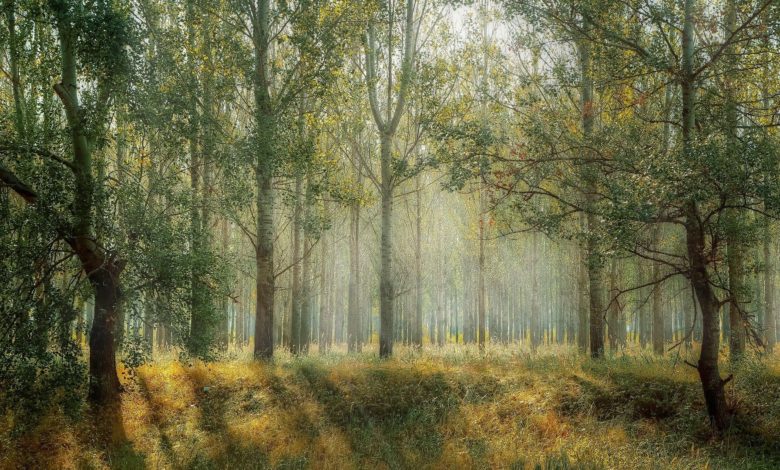Hard and Soft Trees

In the construction industry, the terms hardwood and softwood are used among woodworkers. These terms are commonly used to distinguish between hard and durable types of wood and those that are soft and easily shaped. And while this definition is generally correct, it is not an absolute rule.
Differences Between Hard and Soft Trees
Indeed, the technical distinction is about the reproductive biology of the species. Trees that are informally classified as hardwood often shed their leaves, meaning they lose their leaves in the fall. Softwoods, on the other hand, are coniferous trees, with needles instead of normal leaves, and their leaves remain on the tree throughout the winter. Generally speaking, hardwoods; While it is much harder and more durable than softwood, in reality the technical distinction between hardwood and softwood concerns their breeding methods.
Hard Trees
Hardwoods are woody plant species known as angiosperms. (seeds are enclosed in ovarian structures). This structure can be a laconic or a hard-shelled fruit like acorn, but also an apple-like fruit. These plants are also not monocotyledons (the seeds have multiple primitive leaves as they germinate). Tubes in the woody vein found in hardwoods allow water to pass through the trunk; these appear as pores when looking at the wood and when this piece of wood is grown transversely in cross sections. The same pores also create vein patterns that increase the processing and density of the wood. Lumber obtained from hardwood species is mostly used in furniture, flooring, wooden molds and thin veneers. Trees used in these areas include Oak, maple, birch, walnut, beech, mahogany, balsa, teak and alder.
Hardwoods are often much heavier and denser than softwoods. However, they are typically more expensive than softwoods. And they all grow slower than softwoods, which is one of the main reasons they’re more expensive. Many hardwoods have flat, broad leaves that fall off over a period of time in the autumn season. Hardwoods or broadleaves are trees classified as angiosperm plants or plants with closed eggs for protection in an ovary. If properly watered in well-fertile areas or fed in the landscape with a special tree fertilizer mix, these eggs quickly turn into seeds. The seeds fall from the trees in the future in the form of hazelnuts, samaras, acorns, pods and stone seeds.
Hardwoods have either compound or simple leaves. Simple leaves can also be divided into lobed and lobed, and unstained leaves have a straight edge (like a magnolia) or a serrated edge (like an elm). The most common North American tree is alder. It has oval-shaped leaves and reddish brown bark, and this tree can grow up to 100 feet long and are mostly found in the western United States and Canada.
Most Common Hardwoods
Unlike conifers or softwood firs, spruce and pine, hardwood trees are a wide array of common species. Among the most common types in North America are oak, maple, walnut, birch, beech, and cherry. Forests in which most of their trees shed leaves at the end of the typical growing season are called deciduous forests. These forests are found worldwide and are found in temperate or tropical ecosystems. Deciduous trees such as oak, maple and elm shed their leaves in autumn and sprout new ones each spring. There are the most common hardwoods found. Some of these hardwoods and their scientific names are as follows:
• Ash
• Beech
• Lime Tree
• Birch
• Black cherry
• Black walnut
• Poplar
• Elm
• Hackberry
• Hickory
• Holly
• False Acacia
• Magnolia
• Maple
• Oak
• Poplar
• Red alder
• Royal paulownia
• Sassafras
• Sweet
• Cinar
• Pigeon tree
• Willow
• yellow poplar
The texture and density of the wood a tree produces puts it in the hardwood or softwood category. Most hardwood trees are deciduous trees that lose their leaves every year, such as elms or maples. Softwood is derived from coniferous trees (cone bearing), evergreen trees such as pine or spruce. Wood from hardwood trees tends to be harder because the trees grow slower and give the wood more density.
Softwood Trees and Wood
Softwoods are open seeds (conifers) with bare seeds not found in a fruit or nut. Pine, spruce and fir, which give seeds in the form of cones, fall into this class. In conifers, seeds are released into the wind when they mature. This allows the tree’s seed to spread over a wide area, allowing it to emerge relatively earlier than hardwood species.
Softwoods do not have pores but instead have linear tubes called tracheids that provide nutrients for growth. These tracheids carry the same thing as hardwood pores: water. They also produce sap that protects from pest infestation and provides essential elements for tree growth. Softwoods are mostly used in pulp wood to make paper, dimensional frame making in the construction industry and layers in the form of chipboard, plywood and particleboard. Among these trees used in these uses are Douglas fir, redwood, cedar, pine, juniper, yew and spruce. Softwoods are generally less dense and much lighter than hardwoods. Most species are much cheaper than hardwoods, making it a clear favorite for any structural application where wood would not be seen. The rapid growth of softwoods compared to most hardwoods is one reason why they are less expensive.
With rare exceptions in this tree species, they have needle-like leaves that remain on the tree throughout the year, although they shed slowly as they age, and they are called coniferous trees. Often, softwoods regenerate all of their needles and cones every two years.
Softwood trees are gymnosperm trees that multiply by forming cones, whose pollen spreads to other trees by the wind. Pollinated trees form what are known as bare seeds that fall to the ground or spread by the wind and grow elsewhere. These trees usually have needles and cones, so they are known as conifers like spruce or pine trees. Other examples of softwood trees include cedar, Douglas fir, juniper, redwood, cypress, and larch. Most conifers (such as larch) are always green, although there are some exceptions, so it is best to stick to their technical classification as conifers or Pinophyta. Because they grow faster than most hardwoods, most softwoods have a lower density than most hardwoods and are therefore easier to cut and are generally cheaper to harvest.





